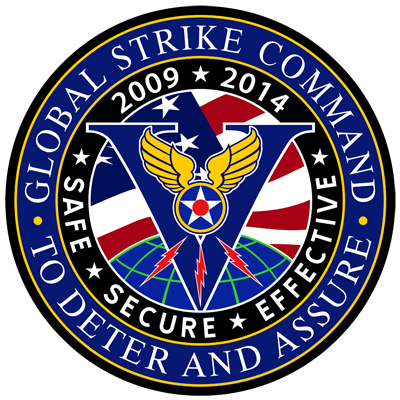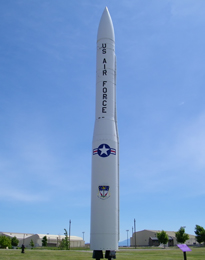Air Force Global Strike Command

AFGSC
Air Force Global Strike Command, AFGSC, was created due to a number of incidents involving Air Force nuclear weapons and how these weapons systems have been overseen and managed by the Air Force. The creation and activation of the Air Force Global Strike Command has led a number of individuals to draw parallels to Strategic Air Command, which was a vital command that led the Air Force's nuclear operations until being inactivated in 1992.
AFGSC essentially is the direct descendant of Strategic Air Command, (SAC) which was in operation for approximately 45 years, and was an integral part of the command structure in the Air Force, particularly during the height of the Cold War. Air Force Global Strike Command upholds the lineage, history and honor of SAC.
History of AFGSC
The Air Force officially established Air Force Global Strike Command on January 12, 2009 at Bolling Air Force Base, Washington D.C. This was a provisional command that was responsible for implementing the Secretary of the Air Force's Program Action Directive and Programming Plan.
An official activation ceremony was held for Air Force Global Strike Command at Barksdale Air Force Base in Louisiana, on August 7, 2009. The Air Force chose Barksdale AFB as its permanent headquarters for AFGSC. This new, single, major command (MAJCOM) now takes on the significant responsibility of overseeing all of the US Air Force's long range nuclear capable bombers and ICBMs.
Air Force Global Strike Command originated based on the necessity for improvement of the management of the United States Air Force's portion of the United States nuclear arsenal, which amounts to two thirds of America's nuclear deterrent. It took over responsibility for the nuclear capable assets of Air Force Space Command on December 1, 2009 as well as the nuclear capable assets of Air Combat Command on February 1, 2010.
The mission of Air Force Global Strike Command is to "Develop and provide combat ready forces for nuclear deterrence and global strike operations - Safe - Secure - Effective to support the President of the United States and combatant commanders."
A key component of this mission, as was outlined by the first commander of AFGSC, Lieutenant General Frank Klotz, who stressed that it is critical that it will be the people of Air Force Global Strike Command who will ultimately maintain the credibility and viability of this important mission. AFGSC understands that in moving forward, that a foundation of discipline, pride and focused attention to detail is an absolute necessity for the effective function of this new major command.
The Air Force currently manages 20 B-2 Spirit bombers, 62 B-1B bombers and 57 B-52 Stratofortress bombers, as well as three missile wings consisting of a total of 450 Minuteman III ICBMs. These all make up the current nuclear weapon systems that are in place primarily for the purpose of nuclear deterrence. There are some individuals who do not understand that the best way to win a nuclear war, is to never have to engage in that war. This is the core principle of nuclear deterrence, something of which the Air Force upholds and carries out on a daily basis.
Installations currently assigned to Air Force Global Strike Command include Barksdale Air Force Base, Malmstrom Air Force Base, Minot Air Force Base, F.E. Warren Air Force Base, Dyess Air Force Base, Ellsworth Air Force Base, Kirtland Air Force Base, and Whiteman Air Force Base.
For further information about Air Force Global Strike Command, follow the link below to their website.


